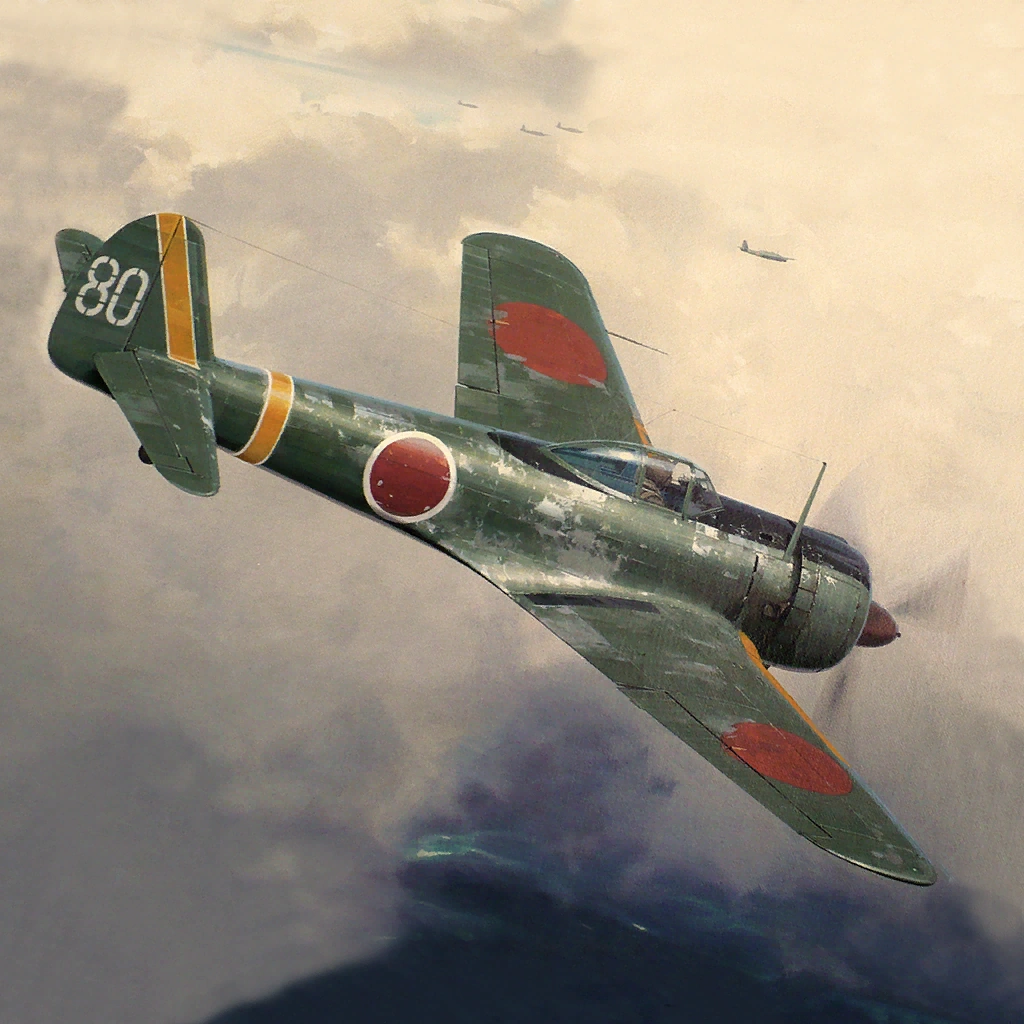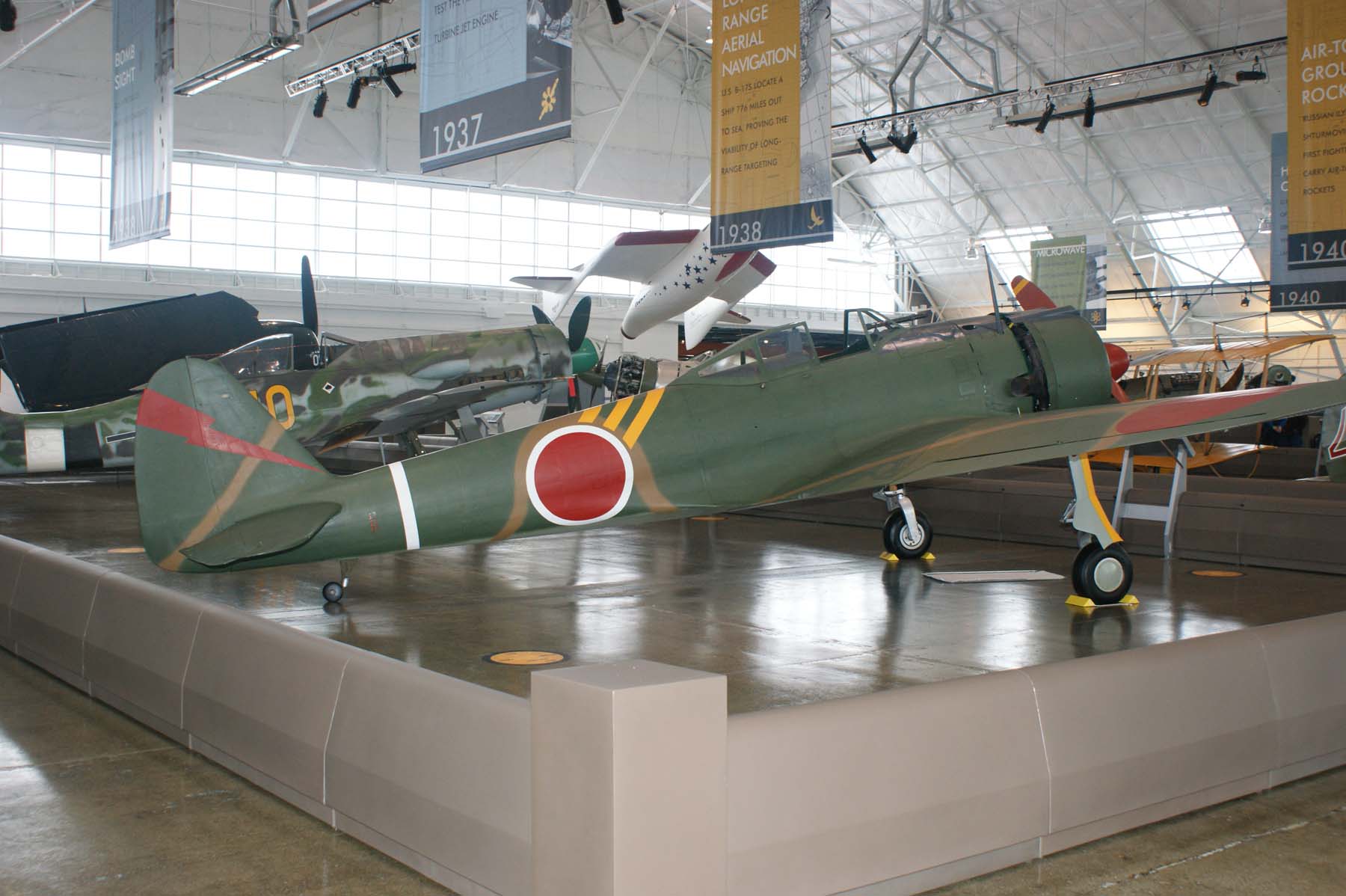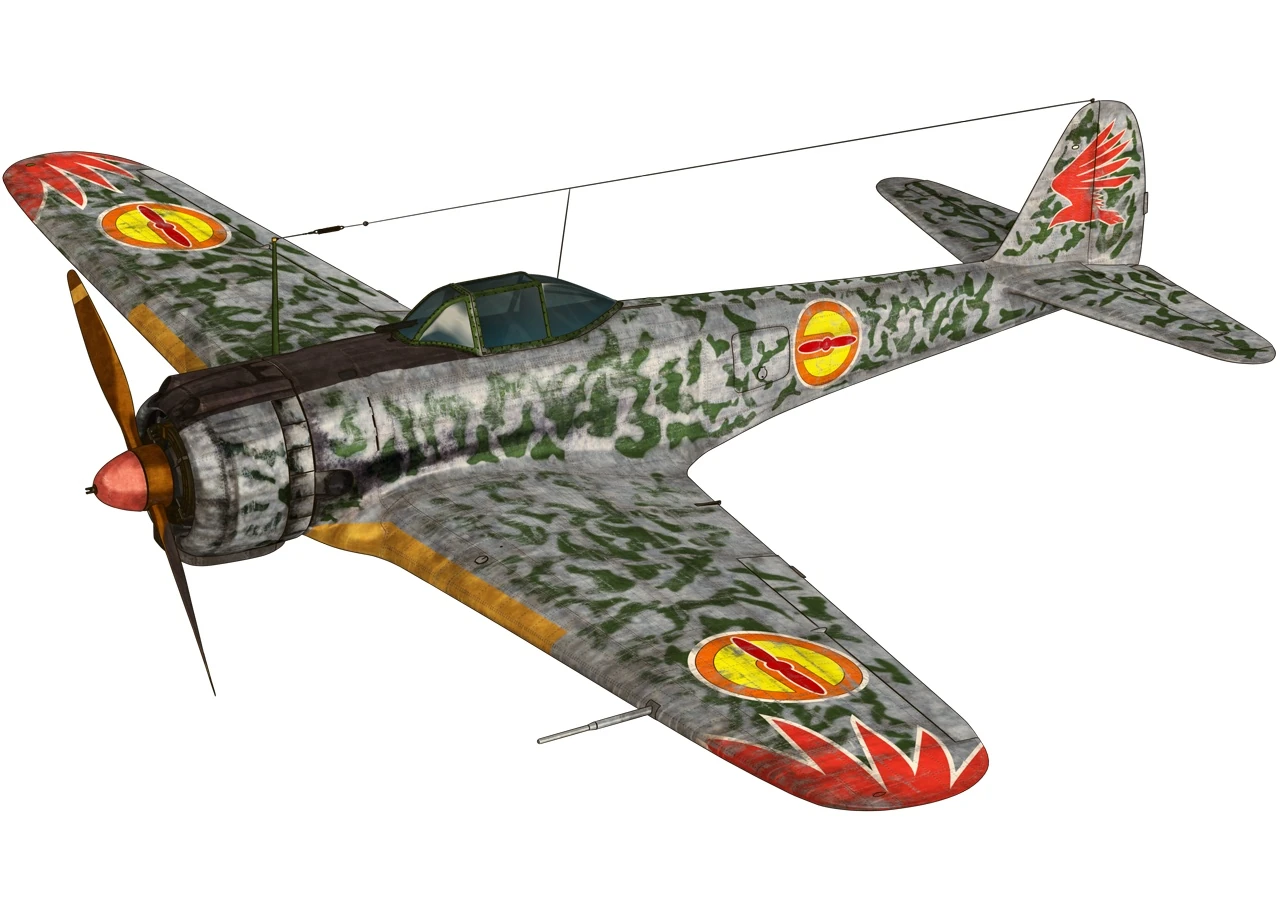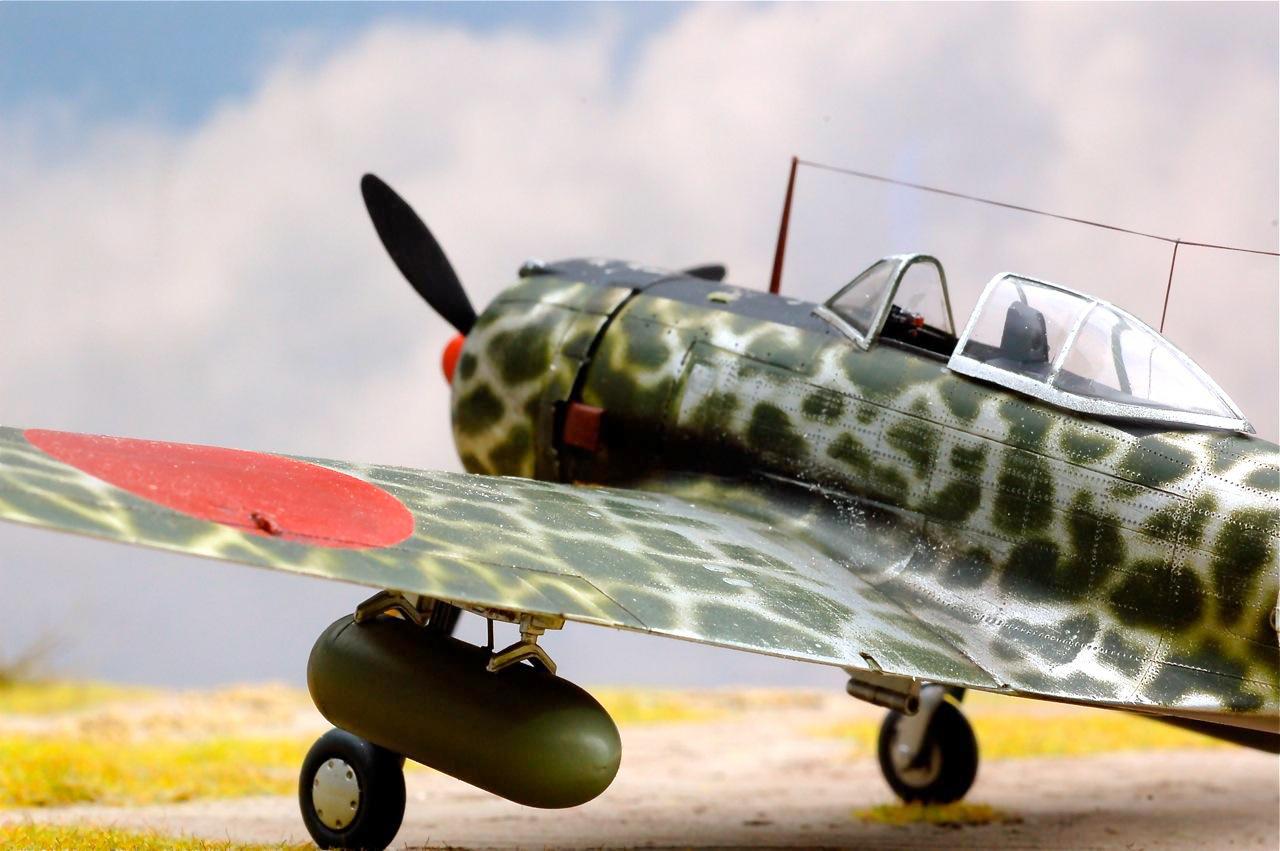
Pin on Nakajima Ki43 Hayabusa "Oscar"
The workhorse fighter aircraft of the Japanese Army Air Force, the Nakima Ki-43 Hyabusa served throughout World War II. Full-scale production of the Peregrine Falcon began in April 1941. The JAAF accepted it as the Army Type One interceptor, and Ki-43-equipped squadrons entered service in October.

Ki43 Hayabusa Kards The WWII CCG Wiki Fandom
Nakajima Ki-43 Hayabusa (Oscar) Fighter / Interceptor Aircraft [ 1942 ] Production of the Nakajima Ki-43 Hayabusa fighter for Japan was topped only by the Mitsubishi A6M Zero series during World War 2. Authored By: Martin Foray | Last Edited: 05/10/2016 | Content ©www.MilitaryFactory.com | The following text is exclusive to this site.

Nakajima Ki43 Hayabusa Hangar 47
The Nakajima Ki-43 Hayabusa ( 隼, "Peregrine falcon"), formal Japanese designation Army Type 1 Fighter (一式戦闘機, Ichi-shiki sentōki) is a single-engine land-based tactical fighter used by the Imperial Japanese Army Air Service in World War II. The Allied reporting name was " Oscar ", but it was often called the "Army Zero" by American.

Nakajima Ki43 Hayabusa (Oscar) Photo Walk Around
The Nakajima Ki-43 Hayabusa (Peregrine Falcon) was the principle type of fighter aircraft used by the Imperial Japanese Army Air Forces (IJAAF) during the Pacific conflict of 1941-1945.
Nakajima Ki43III Ko Hayabusa built by M.Senft
Nakajima's Ki-43 Hayabusa ("Peregrine Falcon") was the most important Imperial Japanese Army Air Force (IJAAF) fighter of World War II. It entered service in late 1941 and served the entire duration of the war. When production ended in August 1945, Nakajima and Tachikawa had built 5,919 Ki-43s, making the Hayabusa the IJAAF's most-widely.
Nakajima Ki43IIb Hayabusa (Peregrine Falcon) OSCAR Smithsonian
1939. With its relatively low-powered radial engine, two-blade propeller and twin rifle-calibre machine-gun armament, the Nakajima Ki-43 Hayabusa (peregrine falcon) was the most dangerously underestimated Japanese fighter of the early months of the Pacific war; yet, with its outstanding manoeuvrability, it gained complete mastery over Brewster.

Ki43I Hayabusa "Hei" Kouya no Kotobuki Wiki Fandom
Second World War, 1939-1945. Description. The rear fuselage section and tailplane from a Nakajima Ki-43-II Hayabusa (Peregrine Falcon) all metal single engine low wing monoplane fighter aircraft. This machine is believed to have been constructed in 1943 and has the serial no. 5465. The rear fuselage can be detached at a bulkhead just aft of the.

Nakajima Ki43IIIa Hayabusa (replica) Japan Air Force Aviation
11 Warbirds Online features one of the rarer types of Japanese aircraft surviving from WWII the Nakajima Ki-43 Hayabusa ("Peregrine Falcon"). The Ki-43 was a single-engine land-based tactical fighter used by the Imperial Japanese Army Air Force in World War 11.

Nakajima Ki43Ib Hayabusa Untitled Aviation Photo 1488351
Developed in the late 1930s, the Nakajima Ki-43 Hayabusa (Type 1 Fighter) enjoyed a relatively successful service record in the Second Sino-Japanese War once introduced in 1941. The Japanese 59th and 64th Sentai (Squadrons) were the first two squadrons to receive the new Ki-43-I fighter.

Nakajima Ki43 Hayabusa Specifications Technical Data / Description
The Ki-43 was the Imperial Japanese Army (IJA)'s main fighter during the Pacific War. Although overshadowed by the more famous A6M Zero, it featured similar.

AZ de la aviación Nakajima Ki43 Hayabusa Historia de la aviación
As with the Japanese Navy's A6M Zero fighter the Army's Ki-43 Hayabusa or Peregrine Falcon came as a shock to American and British pilots when war broke out in the Pacific in 1941. The low wing, all metal monoplane fighter was more maneuverable and faster than most of the fighters available to the Allies at the beginning of the war.

Nakajima Ki43 Hayabusa (Oscar), WWII singleengine singleseat low
The Japanese Nakajima Ki-43 Hayabusa was a relatively slow, lightly armed, and fragile land-based tactical fighter plane, but it became legendary for its performance in East Asia during the early years of the Second World War, and was famous for its extraordinary maneuverability and climb rate during its service with the Imperial Japanese Army A.

Nakajima Ki43IIb Hayabusa Japan Air Force Aviation Photo
The Nakajima Ki-43 Hayabusa (隼, "Peregrine Falcon") was a single-engine land-based tactical fighter used by the Imperial Japanese Army Air Force in World War II. The army designation was "Army Type 1 Fighter" (一式戦闘機); the Allied reporting name was "Oscar", but it was often called the "Army Zero" by American pilots for its side-view resemblance to the Mitsubishi A6M Zero that was.

KI431 Hayabusa Combat Flight Simulator 2 Mod
The Nakajima Ki-43 Hayabusa ( 隼, "Peregrine falcon"), formal Japanese designation Army Type 1 Fighter (一式戦闘機, Ichi-shiki sentōki) is a single-engine land-based tactical fighter used by the Imperial Japanese Army Air Service in World War II .

WildEagles Nakajima Ki43II "Hayabusa" (Oscar), 64th Sentai, by Jean
Specifications: (Ki.43-I-Hei) Wingspan: 11.44 m (37 ft 6 in) Length: 8.83 m (28 ft 11 in) Height: 3.27 m (10 ft 8¾ in) Wing area: 22 m² (236.81 sq ft) Max speed at 1,000 m (3,280 ft): 441 km/h (274 mph) Max speed at 3,000 m (9,840 ft): 479 km/h (298 mph) Max speed at 5,000 m (16,405 ft): 492 km/h (306 mph)

Nakajima Ki.43 Hayabusa 'Oscar' · The Encyclopedia of Aircraft David C.
Nakajima Ki-43 (Oscar) Designer Hideo Itokawa, (who passed away in Feb 1999) undertook the difficult task of equaling the Ki-27's tight-turning and dogfighting qualities in a heavier 1,000 horsepower (745 kW) class fighter.